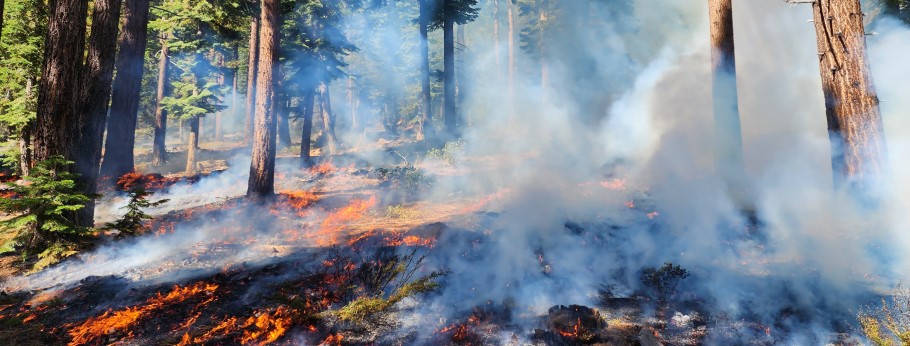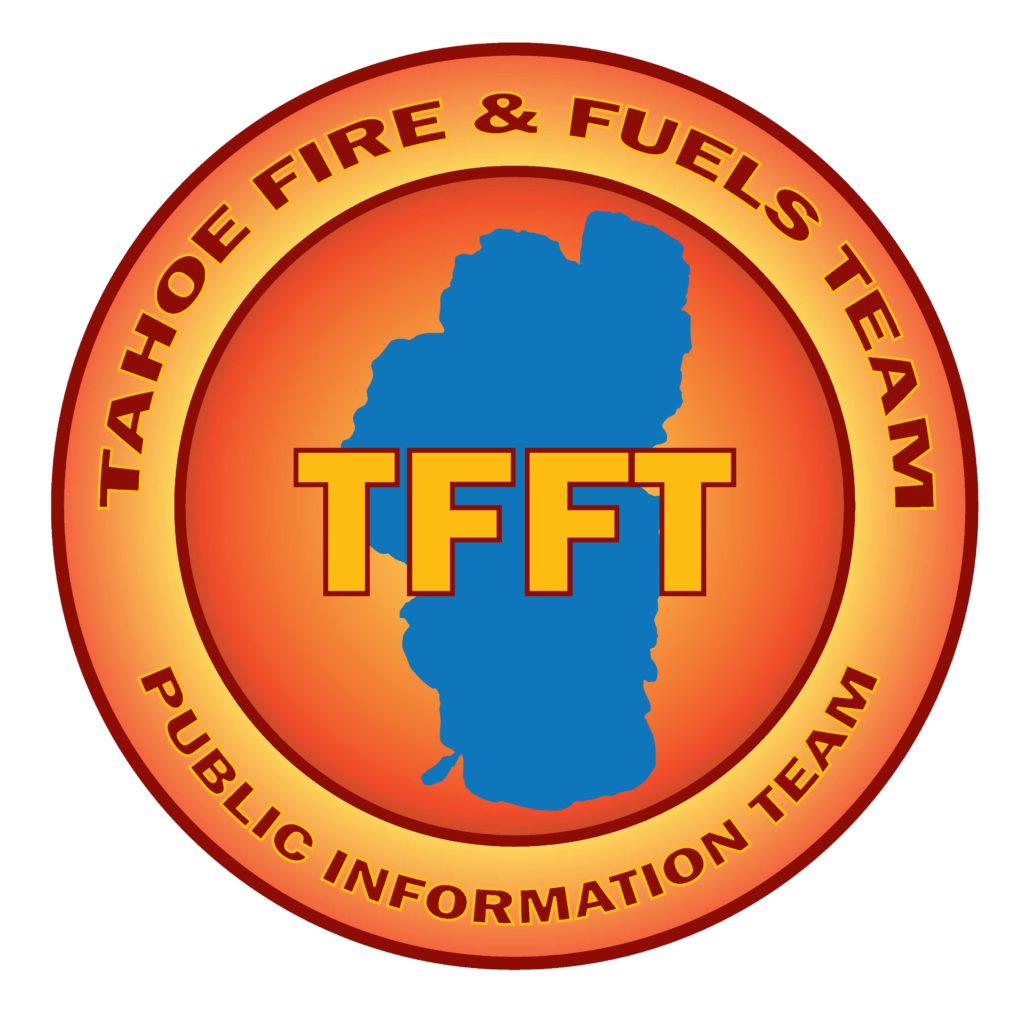Collaborative Work Prepares Tahoe Communities for Wildfire
Lake Tahoe, California/Nevada – Tahoe’s trees are now draped in snow, and wildfire is not top of mind for most people. The Tahoe Fire and Fuels Team (TFFT), however, is taking action year round to protect lives, property, and the environment within the Lake Tahoe Basin from wildfire. This collaborative group formed in 2008 and includes 21 federal, tribal, state, and local conservation, land management, and fire agencies.
“One of the most important ways that we improve forest health and our community’s safety is by implementing priority fuel reduction projects such as thinning trees and conducting prescribed burns,” says North Lake Tahoe Fire Protection Division Chief Isaac Powning, Incident Commander of the TFFT.
In 2023, partners treated thousands of acres of forested and urban lots to reduce hazardous fuels. They made significant progress on many urgent Environmental Improvement Program (EIP) projects, such as NV Energy’s Resilience Corridors Project. The project is thinning forests around NV Energy utility infrastructure reducing hazardous fuels that could otherwise ignite a fire. Once complete, the project will create resilient forests adjacent to 28 miles of NV Energy utility infrastructure and will have thinned 290 acres.
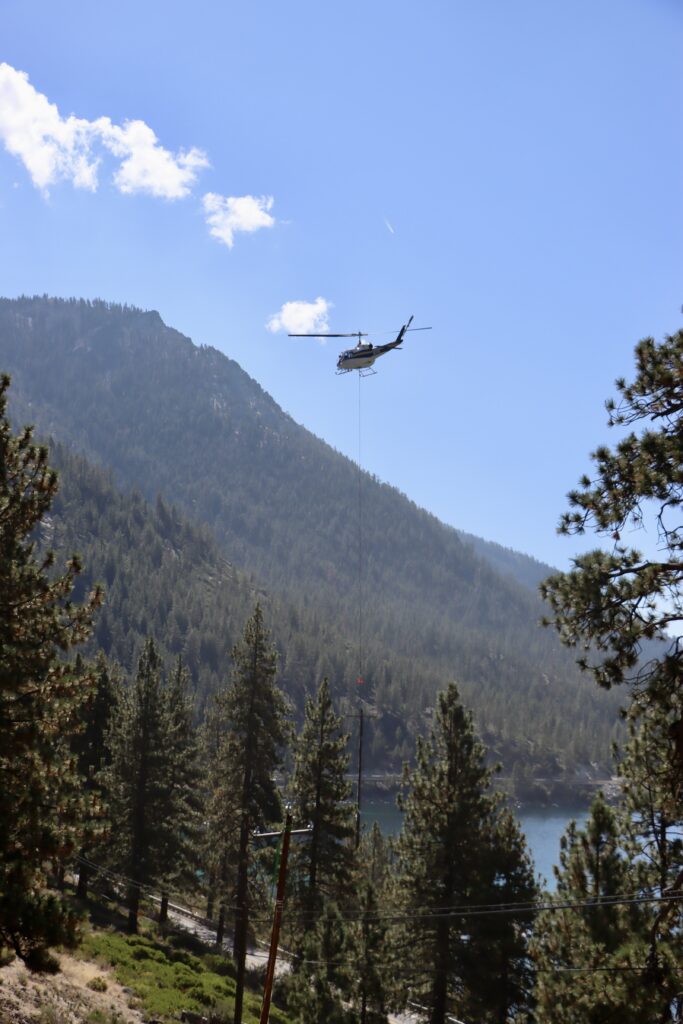
NV Energy’s Resilience Corridors Project is thinning forests around NV Energy utility infrastructure reducing hazardous fuels that could otherwise ignite a fire. Credit: NV Energy
“This work is crucial in improving the safety and resilience of our power system that serves the Lake Tahoe Basin, while at the same time improving forest health and being respectful of the sensitive ecosystem and environment the Tahoe area has to offer,” said Jesse Murray, Vice President of energy delivery and natural disaster protection for NV Energy.
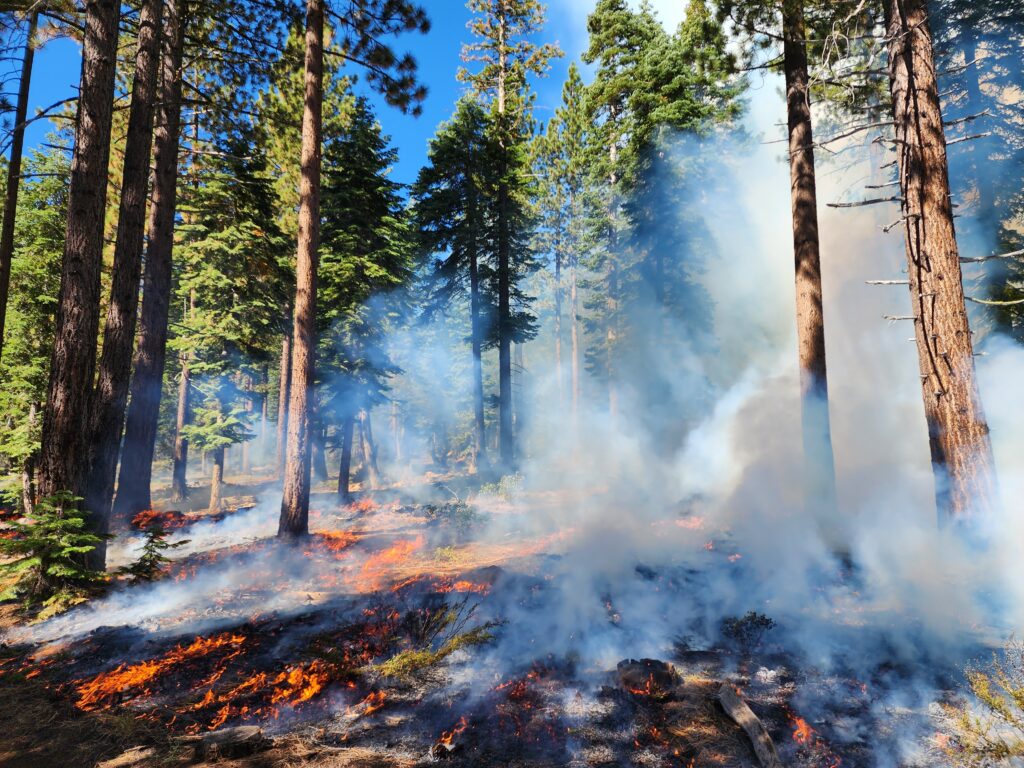
California State Parks conducted a prescribed fire understory burning operation on a 60-acre plot in Burton Creek State Park this fall. Credit: Rich Adams, California State Parks
Thinning forests is only part of the equation. Partners then must remove the biomass by hauling it away or conducting prescribed burns. California State Parks conducted a prescribed fire understory burning operation on a 60-acre plot in Burton Creek State Park this fall. Understory burns improve forest health but are only administered following initial fuel reduction and pile burning to reduce the amount of understory vegetation. Managing and maintaining this forest landscape will provide additional fire protection to adjacent homes and community structures in the event of a wildfire.
“Most people recognize that the smoke generated from these prescribed burns is vastly better than the smoke we’d see if a wildfire burned through an un-maintained landscape,” said Rich Adams, Natural Resources Manager with California State Parks. “When we burn, we have to follow strict standards, but wildfires can be much more prolonged and difficult to contain.”
TFFT partners work closely with the community to educate people about how to prepare for wildfire. Fire protection districts and other partners inspected and provided chipping and home hardening and defensible space recommendations for thousands of privately-owned properties this year. TRPA inspected and provided tree removal permits to more than 1,000 homeowners. In Incline Village, partners conducted an evacuation drill to test the effectiveness of the regional evacuation, current shelter, and mass care plan in response to a simulated wildland fire. And neighborhoods are banding together to create Fire Adapted Communities with the help of Tahoe Resource Conservation District (Tahoe RCD).
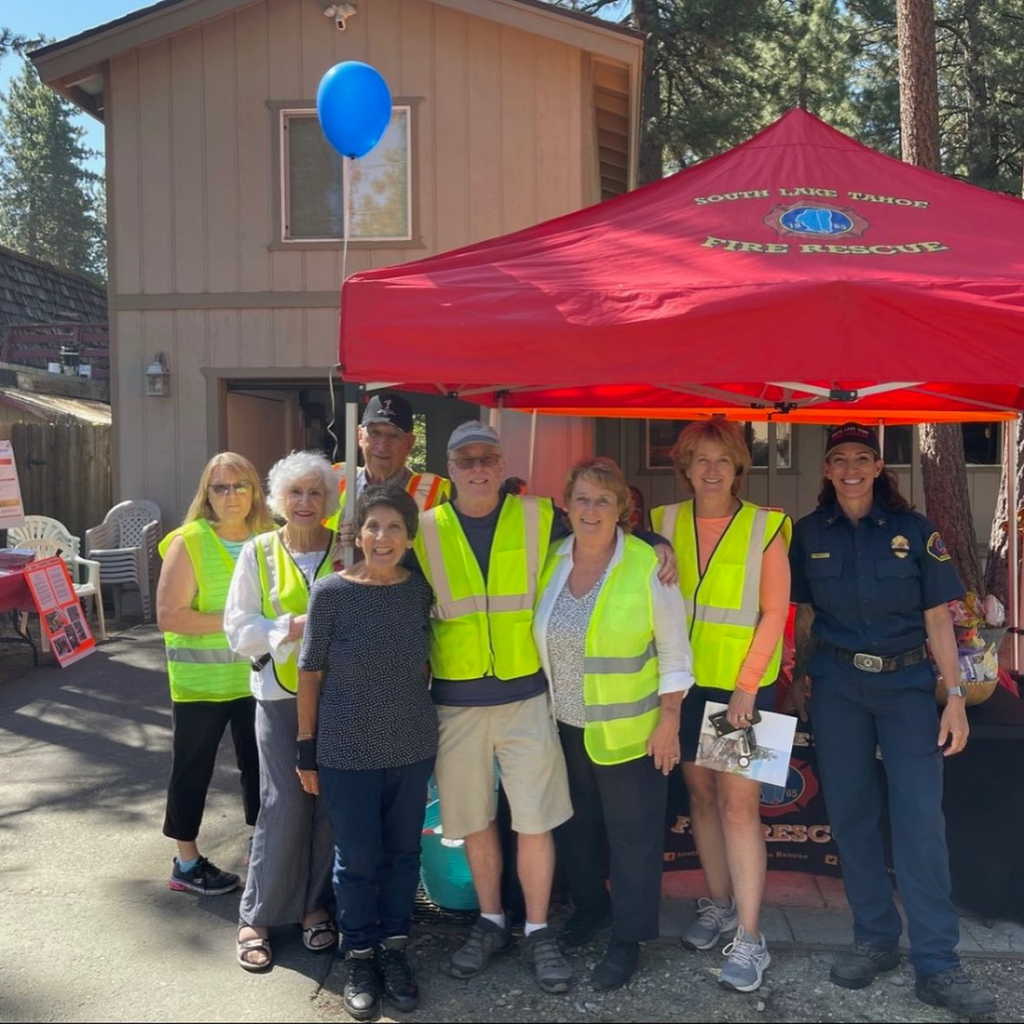
City of South Lake Tahoe Fire and Rescue’s Battalion Chief Kim George with Firewise community members at a workday event. Credit: Tahoe RCD
“More and more communities are becoming Firewise, a national recognition program to assist with becoming more resistant to wildfire,” said Jason Brand, Fire Adapted Communities Program Manager with Tahoe RCD. “In April of 2022 we had 12 Firewise neighborhoods in Tahoe. Now we have 31 certified communities.”
Tahoe RCD has also been leading the Community Wildfire Protection Plan (CWPP) update, a vital initiative aimed at safeguarding our community against the threat of catastrophic wildfires. They held virtual and in-person public meetings around the basin and received more than 600 responses to a bilingual survey to help shape the update. The CWPP draft will be available for public comment in spring of 2024, and once complete will help attract funding and prioritize projects in Lake Tahoe.
“It’s incredible to see how much we’ve accomplished this year working with partners and our communities,” said TFFT Incident Commander Isaac Powning. “Thank you to everyone who has contributed to making Lake Tahoe safer. We’ve got a long way to go, but I’m confident we’ll get there by continuing to collaborate on key forest health projects, community education, and partnerships at all levels.”
Learn more about Tahoe’s forest health-focused Environmental Improvement projects at eip.laketahoeinfo.org/EIPFocusArea/Detail/2 and how to stay prepared for wildfire year round at TahoeLivingWithFire.com
###
About the Tahoe Fire & Fuels Team
The Tahoe Fire & Fuels Team (TFFT) consists of representatives of Tahoe Basin fire agencies, CAL FIRE, Nevada Division of Forestry and related state agencies, University of California and Nevada Cooperative Extensions, the Tahoe Regional Planning Agency, the USDA Forest Service, conservation districts from both states, the California Tahoe Conservancy, and the Lahontan Regional Water Quality Control Board. Our Mission is to protect lives, property, and the environment within the Lake Tahoe Basin from wildfire by implementing prioritized fuels reduction projects and engaging the public in becoming a Fire Adapted Community.
For more information, visit TahoeLivingWithFire.com.

